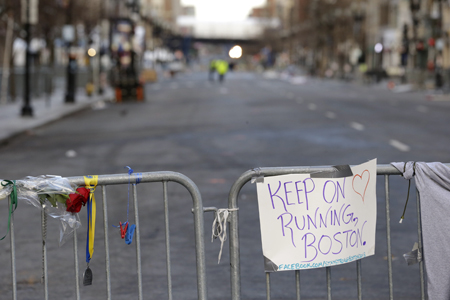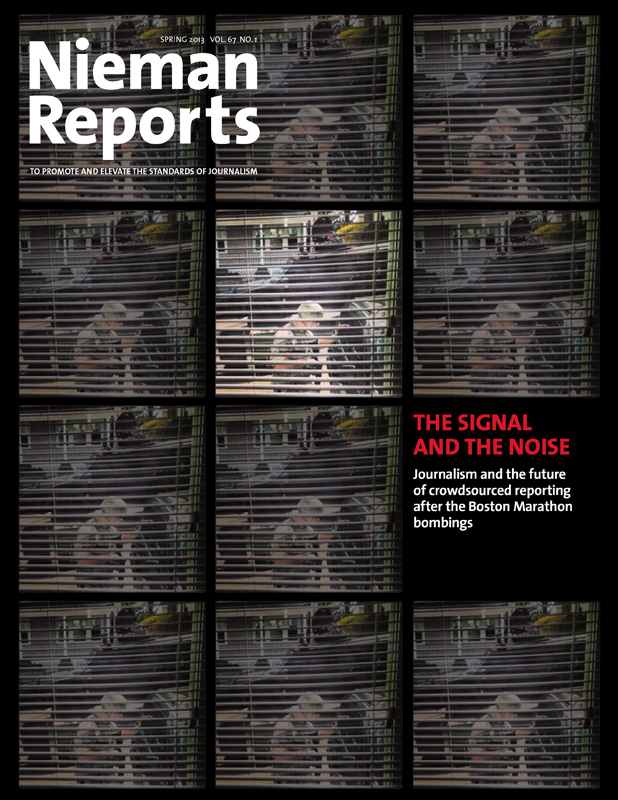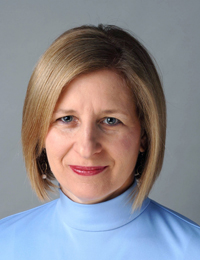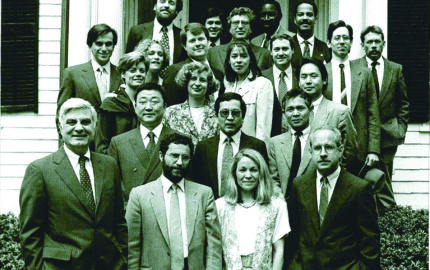When the first of the bombs darkened the sunny euphoria at the Boston Marathon finish line, Nieman Fellow David Abel crouched mere yards from the blast, steadying a camera from Harvard’s Department of Visual and Environmental Studies, where he had been studying introductory video.
Abel, a Boston Globe reporter who worked during his Nieman year to acquire visual storytelling skills, found generous support from professor and filmmaker Ross McElwee. The short documentary Abel was making for McElwee’s class featured the inspirational story of Juli Windsor, who was about to claim marathon history as one of the first two dwarfs entered in the grueling race.
But at 2:49 p.m., as Abel waited with his camera to capture Windsor crossing the finish line, a bleaker narrative emerged. Windsor, like many runners, was stopped after the percussive blasts brought terror to Boston, while Abel documented the tragic aftermath in what would become one of the most heavily viewed videos of the year. In addition to his news footage and eyewitness account for the Globe, Abel completed his short movie, a stirring account of Windsor’s interrupted quest.
Abel’s contributions to coverage of the Boston bombings were significant and widely distributed. They were also but the most visible contributions made by Nieman Fellows, several of whom were at work on projects or analyses that found new urgency in the aftermath of the marathon attack. Some of that work is documented in this issue and focuses on the need to manage the speed and volume of breaking information, which, during the Boston coverage, tripped up trained reporters just as it did the crowd. The unprecedented power to publish possessed by every owner of a smartphone requires new tools and practices.
That notion is central to the work of Nieman visiting fellow Hong Qu, a programmer and one of the earliest developers at YouTube. We invited him to Nieman in order to amplify cross-disciplinary discussion between journalists and the technologists building new tools. He used his time at Harvard to develop Keepr, an open source application for separating good sources from bad while following breaking news on Twitter. The need for such a tool grew more pressing in the aftermath of the bombing.
One tweeter boasted of a “game-changing victory” for crowdsourcing in the early hours of the Boston area manhunt. But what began as a low-grade fever on Twitter and Reddit spiked with the wrongful naming of a bombing suspect. All the while Hong was testing Keepr as a screen for credibility and posting early results on the Nieman Reports website as the story unfolded. The live test drive helped him refine an algorithm and criteria for credibility that he hopes will help journalists and others tracking the next big story.

Photo by Julio Cortez/The Associated Press
For French fellow and editor Ludovic Blecher, the challenge to journalists working with crowdsourced information during breaking news events is twofold: saying too much by passing along inaccuracies, or staying silent “when social media is producing so much noise.” Blecher, working with Nieman fellows Borja Echevarría de la Gándara of Spain and Paula Molina of Chile at MIT’s Center for Civic Media, has been developing a peer-to-peer journalism app that would segregate verified information from the chaff during breaking news stories. The key to their approach is an acknowledgement that the crowd is no longer a passive recipient but a partner. Breaking news isn’t just for journalists anymore, writes Blecher, “but we still have a mission: to organize the noise.”
Other fellows identified non-technological ways in which journalism could be fortified and communities better informed. German fellow Souad Mekhennet, a Muslim who has covered Islamic radicalization in the West, reflects on her experience and belief in the importance of having Muslim journalists report on Muslim communities. And in her essay, Betsy O’Donovan, our community journalism Nieman Fellow, logically argues for educating citizen observers who document breaking news with common journalistic reporting standards, particularly in rural communities where journalists are few.
The fellows’ approaches vary, but in each of these stories lies a common longing: to harness the beast and steer it in the service of truth and accuracy.
Abel, a Boston Globe reporter who worked during his Nieman year to acquire visual storytelling skills, found generous support from professor and filmmaker Ross McElwee. The short documentary Abel was making for McElwee’s class featured the inspirational story of Juli Windsor, who was about to claim marathon history as one of the first two dwarfs entered in the grueling race.
But at 2:49 p.m., as Abel waited with his camera to capture Windsor crossing the finish line, a bleaker narrative emerged. Windsor, like many runners, was stopped after the percussive blasts brought terror to Boston, while Abel documented the tragic aftermath in what would become one of the most heavily viewed videos of the year. In addition to his news footage and eyewitness account for the Globe, Abel completed his short movie, a stirring account of Windsor’s interrupted quest.
Abel’s contributions to coverage of the Boston bombings were significant and widely distributed. They were also but the most visible contributions made by Nieman Fellows, several of whom were at work on projects or analyses that found new urgency in the aftermath of the marathon attack. Some of that work is documented in this issue and focuses on the need to manage the speed and volume of breaking information, which, during the Boston coverage, tripped up trained reporters just as it did the crowd. The unprecedented power to publish possessed by every owner of a smartphone requires new tools and practices.
That notion is central to the work of Nieman visiting fellow Hong Qu, a programmer and one of the earliest developers at YouTube. We invited him to Nieman in order to amplify cross-disciplinary discussion between journalists and the technologists building new tools. He used his time at Harvard to develop Keepr, an open source application for separating good sources from bad while following breaking news on Twitter. The need for such a tool grew more pressing in the aftermath of the bombing.
One tweeter boasted of a “game-changing victory” for crowdsourcing in the early hours of the Boston area manhunt. But what began as a low-grade fever on Twitter and Reddit spiked with the wrongful naming of a bombing suspect. All the while Hong was testing Keepr as a screen for credibility and posting early results on the Nieman Reports website as the story unfolded. The live test drive helped him refine an algorithm and criteria for credibility that he hopes will help journalists and others tracking the next big story.

Photo by Julio Cortez/The Associated Press
For French fellow and editor Ludovic Blecher, the challenge to journalists working with crowdsourced information during breaking news events is twofold: saying too much by passing along inaccuracies, or staying silent “when social media is producing so much noise.” Blecher, working with Nieman fellows Borja Echevarría de la Gándara of Spain and Paula Molina of Chile at MIT’s Center for Civic Media, has been developing a peer-to-peer journalism app that would segregate verified information from the chaff during breaking news stories. The key to their approach is an acknowledgement that the crowd is no longer a passive recipient but a partner. Breaking news isn’t just for journalists anymore, writes Blecher, “but we still have a mission: to organize the noise.”
Other fellows identified non-technological ways in which journalism could be fortified and communities better informed. German fellow Souad Mekhennet, a Muslim who has covered Islamic radicalization in the West, reflects on her experience and belief in the importance of having Muslim journalists report on Muslim communities. And in her essay, Betsy O’Donovan, our community journalism Nieman Fellow, logically argues for educating citizen observers who document breaking news with common journalistic reporting standards, particularly in rural communities where journalists are few.
The fellows’ approaches vary, but in each of these stories lies a common longing: to harness the beast and steer it in the service of truth and accuracy.




